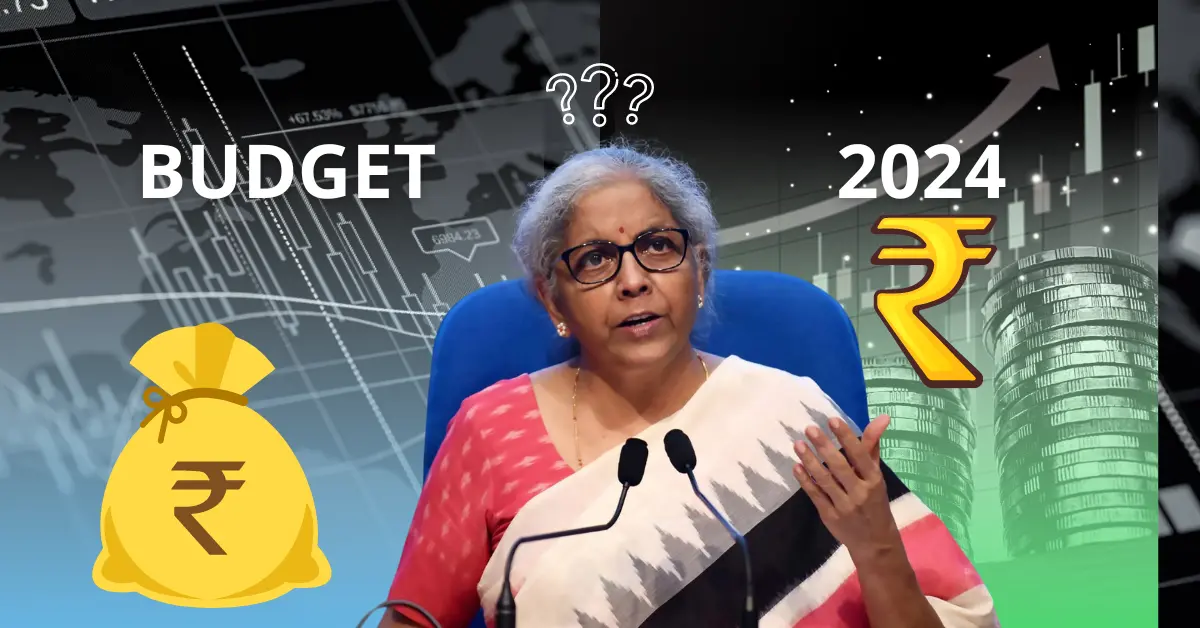Nirmala Sitharaman, the finance minister of India, delivered the Union Budget 2024-25 on July 23, 2024. The government has proposed this as the first budget for its third term. Showcasing the government’s strength and resilience, the budget highlights India’s economic prowess despite the existing geopolitical challenges.
The newly released budget aims at helping the growth of numerous sectors. These sectors are agriculture, energy, the human resources department, infrastructure innovation, research, and more. In comparison to the previous year, several reforms are brought to the 2024 tax structure.
Budget 2024: An Overview
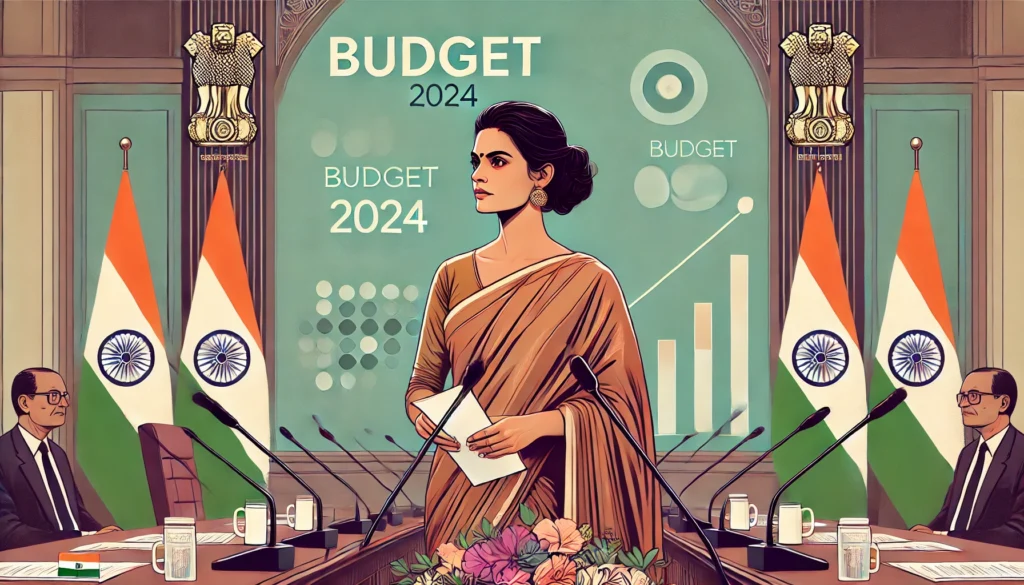

The current budget showcases ‘employment’ and ‘Ease of Doing Business’ in India. This also led to the review of the Income-tax Act. This scheme aims at creating a simplified network for Foreign Direct Investment and Overseas investment. It is done in order to bring about more foreign investments in the country. This is especially for the use of the Indian rupee for international transactions.
Some of the key reforms in the tax structure include capital gains tax, TDS/TCS and reassessment timelines. The Angel Tax and Equalization Levy is no more there in the current regime. Furthermore, the current tax scheme also aims at raising the tax-free long-term capital gains tax. To promote foreign investments, the corporate tax rate is under reduction.
In Budget 2024 , several schemes came into picture in the new regime, such as the Vivad se Vishwas Scheme and Make in India. Each of these schemes aims at helping the growth of India by simplifying and rationalizing GST, especially for expanding different sectors.
The new tax scheme also aims at bringing about customs proposals with rationalization of customs duty structure and trade facilitation measures. According to the new scheme, some of the major sectors like Electronics, Telecom, Medical devices, Aviation, Marine products, and more will get rationalization. However, as of now, there are no proposals about introducing Production Linked Incentives (PLI). New Schemes are in formation to incentivize employment generation.
Budget 2024 Taxation
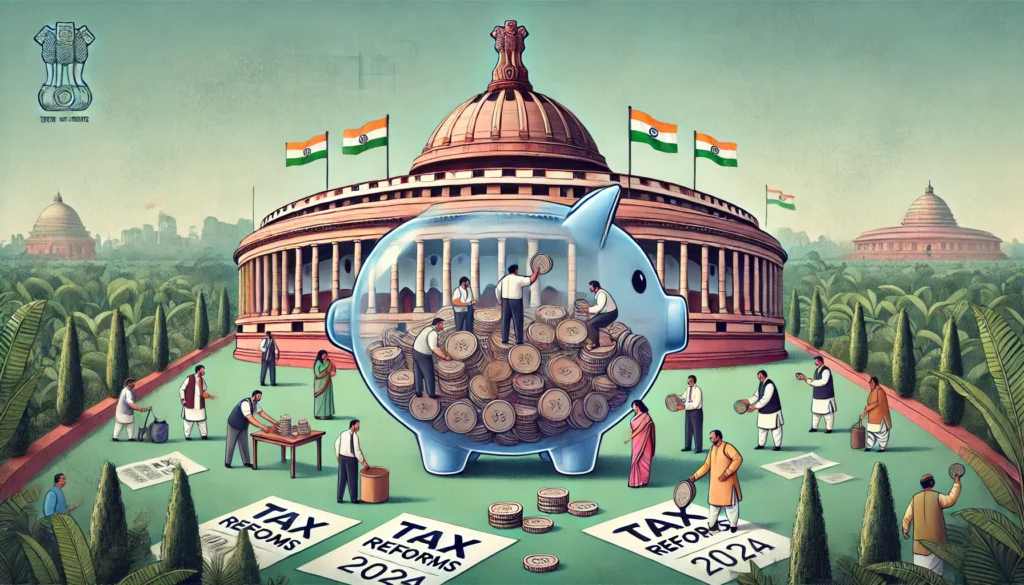

There have been specific taxation changes in the Budget 2024 scheme with the structure as it will become rationalised in the upcoming six months. The new budget scheme aims at simplifying customs duty rates, which will facilitate trade, reduce disputes, and remove duty inversion. There are taxation conditions for two aspects- indirect and direct taxes.
Budget 2024 – Indirect Taxes
The indirect taxes will be in writing on the products, goods, and services before they reach the customers. The customer indirectly pays these taxes, as they are inclusive in the purchase price of the goods.
Different sectors have different taxes, for example:
Medicines and Medical Equipment
As per the new law of Budget 2024, three more cancer medicines will be exempt from customs duties. According to the Phased Manufacturing Programme, the pricing for Basic Customs Duty (BCD) on x-ray tubes and flat panel detectors used in medical x-ray machines has changed. This is to ensure that it will synchronise with the domestic capacity addition.
Critical Minerals
The government has levied full exemption of customs duties on 25 important minerals and also reduced BCD for the two of them. This will be a great move, especially in encouraging the processing and refining of minerals and allowing the security of availability for various strategic and important sectors. As a result, there will be growth across different sectors such as space, renewable energy, telecommunications, nuclear energy, and high-tech electronics.
Solar Energy
The government is focusing on energy transition, which is why they are promoting the use of solar energy. A lot of capital goods used in manufacturing solar cells and panels across the country will have tax exemptions on them. They are also focusing on ensuring an increase in the manufacturing capacity of solar glass and tinned copper interconnect. However, there won’t be any exemptions on customs duties, especially in the aspects provided to them.
Leather and Textile
A reduction in BCD on real down filling material brought about by increasing competitiveness across exports. Duck and Goose promotes these materials. As per 2024 budget, tax will not be applicable on list of materials in use for leather and textile garments. Across all footwear this is applicable.
The government is also focusing on rectifying the inversion of duty taxes, for which they will reduce BCD, subject to specific terms and conditions. These are to be levied upon MDI (methylene diphenyl diisocyanate) for encouraging the manufacture of spandex yarn, reducing from 7.5% to 5%. The export duty structure for raw hides, leather, and skin will also be further rectified, simplified, and rationalized.
Mobile Phones
According to the new tax regime, the government has made specific changes to mobile phone and related products. The BCD for these materials are lesser this year by 15%.
Marine Products
India, as a country, needs to work out the marine industry. Therefore, it is crucial to focus on the same, which is why the government aims to increase competitiveness for better results. BCD is lesser by 5% this year for Marine industry to increase the increase competitiveness across To increase competitiveness across. This is for products like shrimp and fish feed, broodstock, and polychaete works. Furthermore, exemptions on customs duty have also been levied upon the manufacture of shrimp and fish feed.
Metals
The BCD and taxation is less in 2024 for for metals- both precious and non-precious. Such an extensive move through Budget 2024 will also play an important role in encouraging trade and other perks. In India, Gold and precious metal jewelry are widely in use. Thus, it is important to encourage domestic trade for the same, which is why there has been a reduction in customs duty for gold and silver amounting to 6%, whereas for platinum, it is 4%.
According to the new tax regime, a proposal is in place for the reduction of BCD on blister copper and ferro nickel. This is to encourage faster and reduced-cost production of Steel and Copper. However, a concessional BCD of 2.5% will continue with that of copper scrap.
Electronics
The domestic electronics industry will rise significantly in the long run. Therefore, the government aims at bringing about value addition in the industry, for which they aim at reducing BCD. Of course, the BCD fall is in proposal as per terms and conditions, for the oxygen-free copper manufacturing of resistors. Apart from these, some of the materials used for the manufacturing of connectors are also exempt.
Telecommunication Equipment
To foster the growth of the telecommunications industry, the government will also incentivize the domestic manufacturing program. As a result, they will be increasing the BCD on PCBA from 10% to 15%. However, this move is only levied on specific materials, not all.
Plastics
The imports on PVC flex banners had increased significantly in the past few years. In order to curb the import taxes on them, the government levied the BCD on them, which led to an increase from 10% to 25%.
Chemicals and Petrochemicals
In order to support the new and existing capacities of the pipeline, the government has brought about an increase of BCD for ammonium nitrate. The BCD has now gone up from 7.5% to 10%.
Trade Facilitation
Domestic aviation, ship, and boat MRO is in promotion by the government. This is the period for exporting MRO goods, which will be there for repairs. The expectation is its increase within one year. However, a time limit will be levied, especially for the re-import of goods within the warranty, leading to an increase in it from 3 years to 5 years.
Budget 2024 – Direct Taxes
Currently, the government is focusing on boosting the startup ecosystem in India while giving a major push to the entrepreneurial spirit. Thus, they are supporting innovation. They are very likely to abolish the angel tax among all types of investors.
With the increasing popularity of different types of tourism in India, they are also bringing about growth in cruise tourism, especially to offer employment-generating industries. The proposed tax regime aims to create a simple tax structure for both foreign shipping companies and domestic cruises.
Furthermore, via Budget 2024 the government is also bringing about a growth in polishing and cutting for diamonds and other precious metals. Thus, they are applying safe harbor rates to foreign mining companies so that they can sell raw diamonds at better rates in India.
As a part of direct taxes, the government is also attracting development needs through foreign capital in India. They may reducing the corporate tax rate for foreign companies from 40% to 35%.
Most of the direct taxes have been levied on the investment sector only to bring about better and faster growth. This is to foster development and growth, especially in the long run, for better businesses.
Transformation of the Agriculture Sector
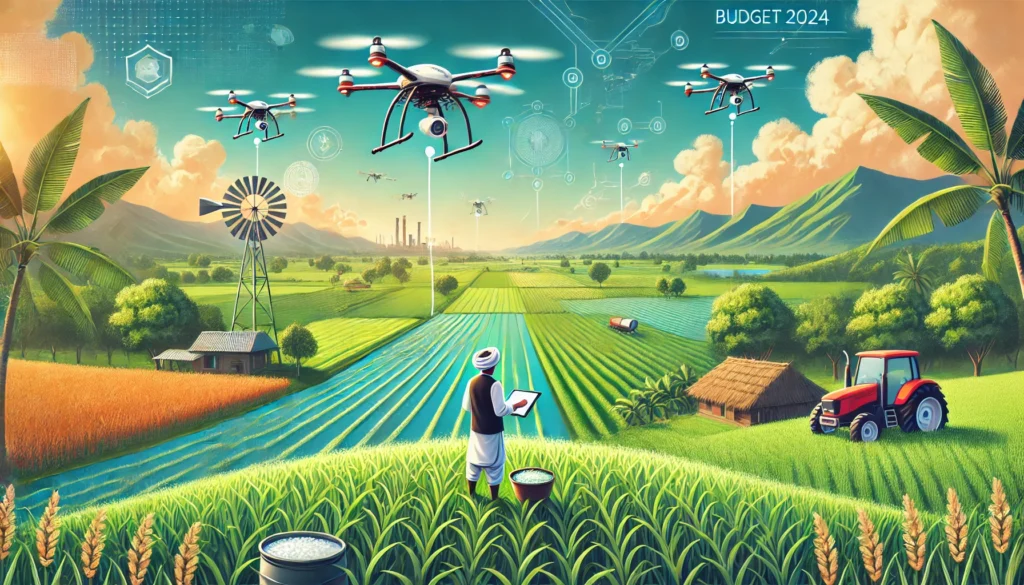

New Investments
A significant change is boosting climate-resilient activities and productivity in the agricultural sector to promote growth. Furthermore, the government is focusing on offering funding to promote business, especially in the private sector. Thus, experts in agriculture will take into consideration this aspect for both- government and foreign investments.
A lot of new varieties will be introduced, especially those to be cultivated by farmers. Most of these are climate-resilient varieties and high-yielding across 32 fields. Certification and branding will also be provided to over 1 crore farmers in the coming two years. Specific implementations across scientific institutions will be in place after discussing with gram panchayats.
Production Capacity
Production capacity will also be in spike to promote self-sufficiency among the farmers. The government is specifically aiming at developing a strategy through which the farmers can achieve atma nirbharta, especially for the growth of oil seeds like sesame, groundnut, sunflower, mustard, and soybean.
The government is promoting Digital Public Infrastructure on a large scale in partnership with states to provide maximum coverage to farmers over the next three years. A digital survey will be there for the Kharif crops, especially in 400 districts. The government aims at registering the details of over 6 crore farmers, within which all information regarding their farms and land registries will be there. As per the new Budget 2024-25 scheme, the government also looks forward to enabling the Kisan Credit Cards as per Jan Samarth.
The National Cooperation Policy of Budget 2024 is likely to be there for the systematic and orderly development of the cooperative sector. This is to ensure faster development of the rural economy and also the generation of several employment opportunities. Furthermore, according to the National Cooperation Policy, around 1.5 lakh crore is in allocation for agriculture and relevant sectors.
Inclusive Human Resource Development and Social Justice
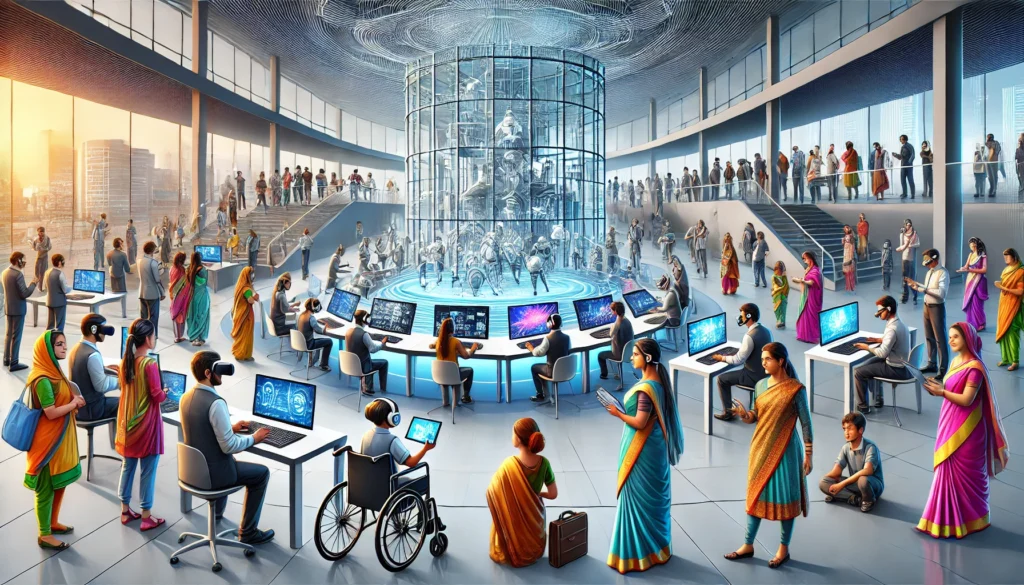

The human resource development sector is adopting a saturation approach, especially to achieve social justice through various programs. This approach will eventually foster better growth in different sectors, such as health and education. Economic activities by different sectors of people will be in promotion, like those of craftsmen, self-help groups, scheduled castes, scheduled tribes, and even street vendors.
Women-led development schemes are in promotion. Therefore, for this initiative, around 3 lakh crore allocation is likely for the scheme for encouraging women and girls.
Purvodaya is a new scheme place for the development of regions in eastern India like Bihar, West Bengal, Jharkhand, Andhra Pradesh, and Odisha. Across this sector, focus shall be for human resources and infrastructure, especially for bringing about better economic opportunities. There will be development of the Amritsar Kolkata Industrial Corridor, which will be a crucial point in bringing about industrial development in the eastern region.
Furthermore, they will also bring about the growth of industrial nodes in Gaya. The budget is also in allocation for road connectivity and power projects across Bihar. The government will also support the growth of medical colleges, sports infrastructure, and new airports that will stand tall in the coming years.
Urban Development
The government, in collaboration with states, will transform cities into growth hubs through strategic economic and transit planning. This initiative includes the orderly development of peri-urban areas using town planning schemes. Additionally, a framework for the creative re-development of existing cities will be in place. This framework will enable policies, market-based mechanisms, and regulations aimed at achieving transformative impacts in urban areas.
Plans for Transit Oriented Development (TOD) will be implemented in 14 large cities, each with a population exceeding 3 million. This will involve comprehensive planning, implementation, and financing strategies. Furthermore, under PM Awas Yojana Urban 2.0, the housing needs of 10 million urban poor and middle-class families will be met with an investment of INR 10 lakh crore, including INR 2.2 lakh crore of central assistance over the next five years.
Policies and regulations will also be developed to enhance the efficiency and transparency of rental housing markets. In partnership with state governments and multilateral development banks, projects for water supply, sewage treatment, and solid waste management will be promoted in 100 large cities. These projects will also aim to use treated water for irrigation and fill nearby tanks.
Infrastructure Development
The Central Government is committed to robust fiscal support for infrastructure, planning to sustain strong investment over the next five years while balancing other priorities and fiscal consolidation. This year, an allocation of INR 11,11,111 crore has been made for capital expenditure, accounting for 3.4% of GDP. In parallel, state governments are encouraged to align their support with similar scale investments, tailored to their developmental needs. To aid this, a provision of INR 1.5 lakh crore for long-term interest-free loans has been introduced to help states manage their resource allocation.
To boost private sector investment in infrastructure, the government will promote viability gap funding and implement enabling policies and regulations. A market-based financing framework is also in the works. Additionally, Phase IV of the Pradhan Mantri Gram Sadak Yojana (PMGSY) aims to provide all-weather connectivity to 25,000 rural habitations.
The tourism sector is also set for significant development, with efforts to position India as a global tourist destination. This includes comprehensive projects for the Vishnupad Temple Corridor, Mahabodhi Temple Corridor, and Rajgir, as well as the revival of Nalanda University. Odisha’s diverse attractions, from temples and monuments to wildlife sanctuaries and beaches, will be developed to enhance its appeal as a top tourism destination.
Innovation, Research and Development
The Anusandhan National Research Fund is set to be operationalized to support basic research and prototype development. Additionally, a new mechanism will be established to encourage private sector-driven research and innovation at a commercial scale, backed by a substantial financing pool of INR 1 lakh crore. This initiative aims to foster a robust environment for scientific and technological advancements, driving progress across various industries.
In a bid to expand the space economy by five times over the next decade, the government is placing significant emphasis on this sector. To support this ambitious goal, a venture capital fund of INR 1,000 crore will be created. This fund is designed to stimulate investment in space-related projects, ensuring sustained growth and development within the space industry.


